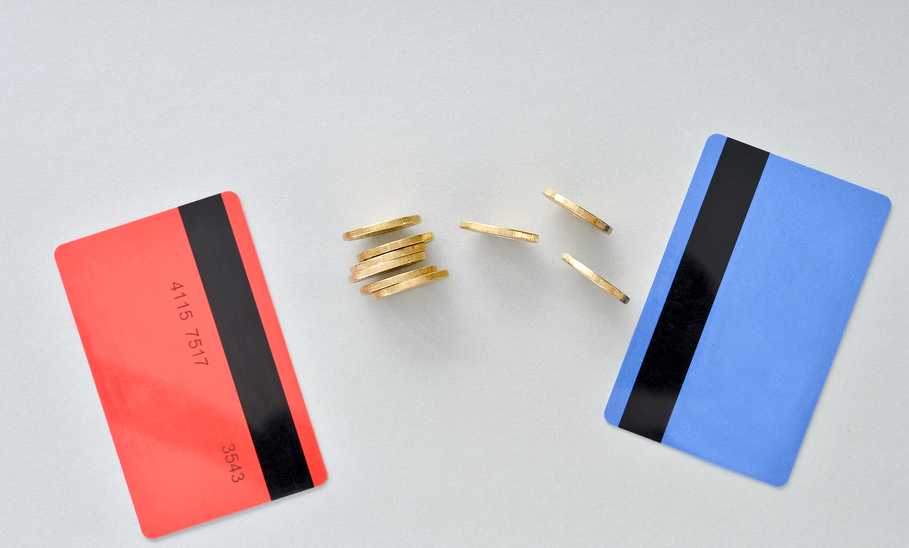All You Need To Know About Balance Transfer Credit Cards: What Are They, How Do They Work?

Our evaluations and opinions are not influenced by our advertising relationships, but we may earn a commission from our partners’ links. This content is created by TIME Stamped, under TIME’s direction and produced in accordance with TIME’s editorial guidelines and overseen by TIME’s editorial staff. Learn more about it.
If you're having trouble paying off credit card debt, a balance transfer credit card might help. Many credit cards offer promotional interest rates as low as 0% on balance transfers, which can help you pay down your debt without racking up more interest. However, you'll likely pay a 3% to 5% balance transfer fee, and the card's regular annual percentage rate (APR) will kick in when the introductory period ends.
Here's what you need to know about balance transfers to help you decide if one is right for you.
A balance transfer moves debt from one credit card to another with a lower interest rate. Most balance transfer credit cards offer 0% APR during an introductory period typically lasting between 12 and 21 months. During that time, you pay zero interest on transfers—so every dollar of your payment goes toward paying down the balance.
| Balance transfer intro apr | balance_transfer_intro_apr,balance_transfer_intro_duration | balance_transfer_intro_apr,balance_transfer_intro_duration |
|---|---|---|
| Regular APR | reg_apr,reg_apr_type | reg_apr,reg_apr_type |
| Credit score needed | credit_score_needed | Excellent, Good |
| Annual fees | annual_fees
(Rates & Fees) | annual_fees
(Rates & Fees) |
| Bonus rewards | bonus_miles_full | bonus_miles_full |
You can transfer more than credit card debt, depending on the credit card issuer. For example, Capital One lets you transfer balances from auto, personal, and student loans, too. Transferring multiple balances is possible if you stay under your balance transfer limit. You can usually transfer up to 90% of your credit limit (which is based on your income, credit score, current debt, and other factors).
In most cases, you'll pay a balance transfer fee to shift balances to the new card (the amount is added to the new card's balance). The fee is typically 3% to 5% of each balance you transfer, with a fixed minimum fee, such as $5 or $10. Some cards have zero balance transfer fees, but the cards with the longest promotional periods usually have fees.
Credit card balances can increase quickly on cards with high APRs because interest accrues daily. At the end of each day, the card issuer calculates your daily interest (APR ÷ 365 days) and adds it to your balance for the next day. In other words, the interest you accrue one day is added to the next day's balance, and so on. Transferring a high-interest card balance to a 0% card can save you significant money.
Here's an example. Say you have a $5,000 balance on a card that charges 20% interest, and you pay a $100 minimum monthly payment. If you stick to the minimum payment and don't make any new purchases, paying off the balance will take 109 months, and you'll pay $5,840 in total interest. (You can use an online credit card payoff calculator like this one to try different scenarios.)c
Now assume you transfer the $5,000 balance to a card offering a 0% APR for 21 months. If you pay the same $100 a month, your balance will be $2,900 at the end of the introductory period. From there, it will take an additional 40 months to pay off the balance completely, and you'll pay $1,095 in interest—$4,745 less than if you kept the balance on your high-interest card.
Of course, you can avoid interest altogether if your budget permits you to make larger monthly payments. In this example, you could pay off the entire $5,000 balance in 21 months by paying $238 ($5,000 ÷ 21) every month. This strategy is the best way to take advantage of a balance transfer credit card.
While the process varies by credit card issuer, here are the basic steps for completing a balance transfer.
The best balance transfer credit cards offer an introductory 0% APR, a long promotional period, low or zero balance transfer fees, and no annual fees.
You can usually initiate a balance transfer when you apply for a card. Otherwise, request one via the new card issuer's online portal or by phone. You may also have the option to use a convenience check your new credit card issuer provides. Make sure to confirm that it will count as a balance transfer (not a cash advance) at the interest rate you expect.
It can take several weeks for your new credit card issuer to pay off your existing card or loan (read the fine print to know what to expect for your card). In the meantime, keep up with the minimum payments on the existing account until you confirm the balance has been transferred in full. That way, you can avoid any surprise interest charges and late fees on your current card.
Even though you have a 0% APR, you're still responsible for making the required minimum payments on time every month. You could lose the introductory interest rate if you make a late payment or miss one. Consider setting up autopay to ensure you make on-time payments. If your budget allows, pay enough each month to zero out the balance before the promotional period ends to avoid paying interest.
Numerous credit card issuers offer balance transfer cards. Here are a few to consider:
Balance transfers can be an excellent way to tackle debt. Still, it's important to weigh the pros and cons before deciding whether a balance transfer credit card is right for you.
If you're not sure a balance transfer is right for you—or you don't qualify for the best terms—you might consider a personal or student loan.
A personal loan is an installment loan that lets you borrow a set amount of money and then make fixed monthly payments until you pay off the loan. It can be a good option for financing a large purchase or consolidating high-interest debt.
Traditional banks, credit unions, and online lenders like Upgrade and Upstart offer personal loans. However, be aware that interest rates can be high, depending on your credit score and other factors. Building your credit score can help you qualify for the best personal loan rates.
Online lenders like Ascent offer private loans to help undergraduate and graduate students pay for higher education costs. These loans can be helpful if you need more funding than federal student loans provide.
Many private lenders extend larger loans (up to the full cost of attendance), and you may have a choice of repayment terms. While interest rates can be higher than other college funding options, you may qualify for competitive rates with excellent credit.
According to a recent Bankrate survey, more than a third (35%) of U.S. consumers carry credit debt from month to month. Of those, 43% say they don't know the interest rate they're paying. That's worrisome, considering the average APR for credit cards accruing interest as of Feb. 2023 (the most recent report) is 20.92%—the highest since the Federal Reserve began tracking rates in 1994.
The primary benefits of using a balance transfer credit card are saving money and getting rid of debt faster. Using the new card to make purchases will only increase your total interest and prolong the time it takes to pay off the balance. To make the most of your balance transfer credit card, avoid making new purchases and pay off your balance before the promotional APR ends.
For rates and fees of the card_name, please visit this URL.
A balance transfer can both hurt and help your credit score.
Applying for a new card triggers a hard inquiry, which can ding your credit score temporarily. However, having an extra card means you have access to more credit, which lowers your credit utilization ratio (the amount of credit you have versus the amount you use). The lower your credit utilization ratio, the better in terms of your credit score. Still, this only works if you use the balance transfer credit card to pay down debt—not add to it.
After the promotional period ends, the card's regular interest rate kicks in and applies to any remaining balance.
A balance transfer can take several weeks to go through. Continue making minimum payments on your existing accounts until you confirm the transfer is complete to avoid surprise interest charges or fees.
You can continue using your existing credit card even if you transfer the entire balance. You don't need to close the account—and doing so could actually hurt your credit score by increasing your credit utilization ratio.
When you transfer a balance, you're still required to make minimum monthly payments. You could lose the promotional APR if you skip payments or miss the deadline. In that case, any remaining balance would be subject to the card's regular interest rate.
The information presented here is created by TIME Stamped and overseen by TIME editorial staff. To learn more, see our About Us page.



